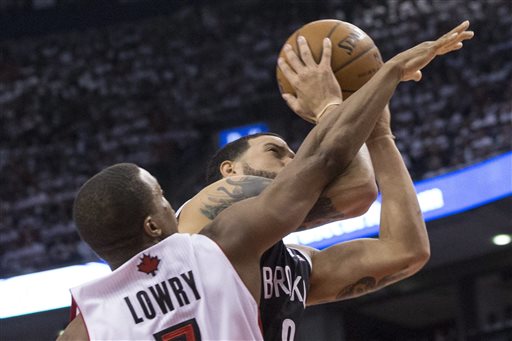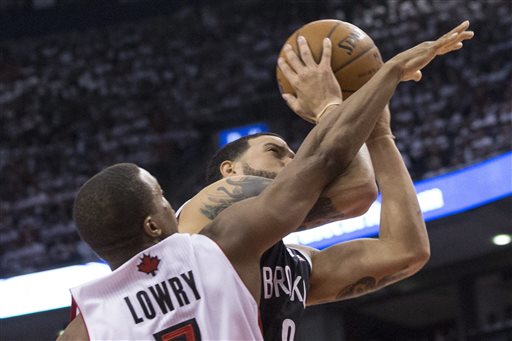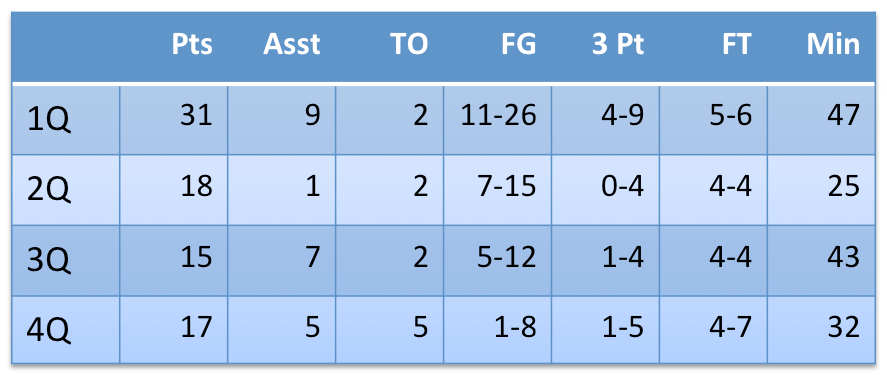
Imagine a star point guard put up these numbers in a playoff game: 1-8 shooting, 4-7 from the foul line for 7 points, 5 assists, 5 turnovers, and 5 fouls in 32:13 of playing time. Not good, right?
Bad news: those aren’t made-up numbers. Through four games, that’s what Deron Williams’s line looks like if you only look at his stats from the four fourth quarters in this series. Here’s the numbers:
I’d take first quarter Deron Williams any day. You live with middle-quarters Deron Williams. But fourth-quarter Deron Williams has been a constant struggle all series.
He played all 12 minutes in the fourth quarter in Game 4 Sunday night, shooting 0-4 from the field and committing two turnovers. He hit just one field goal in the second quarter and did not score in the second half. One of his fourth quarter attempts was a floater in the paint with the game tied and 7:30 left, his only shot in the paint in the fourth quarter all series. It was blocked. The Nets lost 87-79.
“I know I’ve got to be more aggressive,” a dispirited Williams said at his locker following Sunday night’s game.
In the regular season, the fourth quarter was arguably Williams’s best: per 36 minutes, Williams averaged 18.0 points with a true shooting percentage of 60.5 percent in the fourth quarter, both tops in any individual quarter. He also averaged 6.9 assists to only 2.8 turnovers per 36, roughly his season average.
But in the playoffs, we’ve seen a different Deron Williams: he’s played tentative, rarely attacking the paint, lurking around the three-point line until an open look presents itself. That’s not necessarily a bad thing — Williams is a good three-point shooter — but the Nets rely on his ability to attack and create looks for others, and when he’s not doing it, their offense suffers. In four close games in crunch time, Williams has been a non-threat.
The onus is also on the team to get him involved. I know, I know: he’s the point guard, he’s the facilitator, it’s his job to get everyone involved, including himself. But it’s a double-edged sword: if he attacks the lane and shoots without passing, he’s a ball-hog. If he passes away, then he’s got to rely on his teammates to get the ball back to him in good spots.
Williams got a couple of good looks late in the fourth quarter from deep that rimmed out, but he was willing to pass the ball away too often before getting into the paint against Toronto. Though he’s been particularly ineffective in the playoffs, it’s indicative of a larger trend with Williams, who’s attacked the basket less and less in the last few seasons.

















